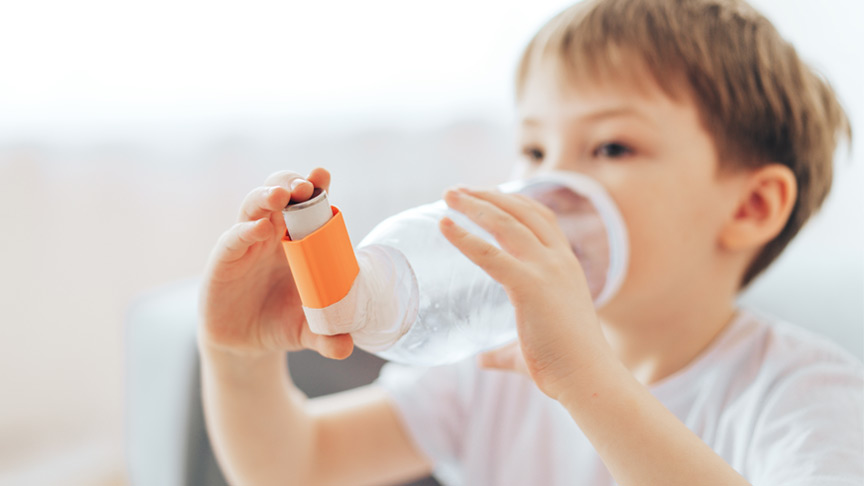
Pre-school wheeze – is it a phase or is it something more serious?
Wheezing is a very common condition for young children, in fact, up to 30% of children will have at least one episode of wheezing before their third birthday.
While it is common, it doesn’t make it any less concerning when you hear a high-pitched whistling sound coming from your child’s chest.
So, what is pre-school wheeze and what do you need to know about managing it?
What is pre-school wheeze?
Pre-school wheeze (also called reactive airways disease or viral-induced wheeze) affects the airways (the tubes that carry air from the mouth and nose to the lungs) of children aged 1 to 5 years.
It happens when your child’s airways become swollen and fill with mucous, making it hard for them to breathe.
What’s the difference between pre-school wheeze and asthma?
The term “asthma” is not usually used for wheezing in preschoolers because it often doesn’t last, and most children outgrow it.
Some children may experience one episode wheezing during a viral infection, while others may have more frequent episodes.
Children’s Health Queensland Emergency staff specialist, Dr Deborah Shellshear, said young children typically wheeze when unwell with a viral illness and are well between episodes and do not wheeze.
“Some viruses can set off an attack of wheezing, but it is unlikely to occur with every virus,” Dr Shellshear said.
“These wheezing episodes generally improve as the child grows and most children with pre-school wheeze will not go on to develop asthma in later life.”
What are the signs and symptoms of pre-school wheeze?
The signs and symptoms to look out for include:
- Wheezing sound (a whistling sound when breathing in and out)
- Fast breathing and/or difficulty breathing
- Muscles of the chest or neck drawing in when breathing
- Cough
- Being unable to talk in sentences
When should I see a doctor?
See your GP if your child has any of the above symptoms or if they:
- wake up at night with wheezing
- are using the reliever every 3 hours for more than 24 hours.
Your child should have regular check-ups with their doctor as symptoms and medicine may change. If your child has been in hospital with pre-school wheeze, they should see their doctor within 1 week of going home. They should also see the doctor for a preventer if they are having more than one attack every three months.
In an emergency, call Triple Zero (000) and ask for an ambulance.
Seek help immediately and continue using the reliever if your child has:
- trouble breathing or talking
- blue lips
- symptoms that get worse very quickly or don’t seem to respond to Ventolin.
If you're not sure whether to go to an emergency department, call 13 HEALTH (13 43 25 84) and speak to a registered nurse.
Can pre-school wheeze be treated?
Pre-school wheeze can be managed with a Ventolin puffer and spacer while the immune system kills the virus.
The Ventolin puffer will need to be used regularly when they are first sick and, as they get better, the doses can be spaced apart.
Your doctor will give you a wheeze action plan, so you know when and how often to give Ventolin.
What can I do to reduce the severity of pre-school wheeze?
There are a few that can help reduce pre-school wheeze:
- Avoid smoking around children as this can make pre-school wheeze more severe
- Get the flu vaccine each year to protect your child from becoming unwell with the flu
- Reducing dust in the environment can help some children who are sensitive to dust mites
- If you child has hay fever, treating this condition can help reduce overall wheezing.